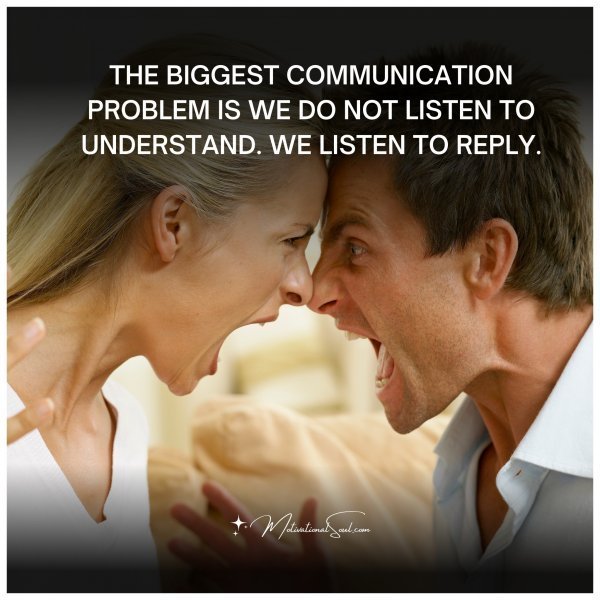
We motivate for better communication.
We’ve all been in those conversations that seem to go nowhere. The other person just isn’t getting what we’re saying, and we feel like we’re talking to a wall. These are the types of conversations that can kill relationships and ruin opportunities. In this blog post, we will discuss what kills communication and how to revive it!
Things That kill communication:
- Multitasking:
Trying to communicate while multitasking can be distracting and disrespectful. For example, checking your phone or typing on your computer while someone is speaking can make them feel as if their message is not important to you. - Assuming intent:
Assuming negative intent behind someone’s words or actions can lead to misunderstandings and hurt feelings. For instance, assuming that someone is being sarcastic or passive-aggressive can cause unnecessary conflict. - Using absolutes:
Using absolutes like “always” or “never” can be dismissive and lead to defensiveness. For example, saying “You always do this” can make the other person feel attacked and unwilling to engage in conversation. - Blaming:
Blaming someone for a problem can cause defensiveness and prevent constructive conversation. For instance, saying “This is all your fault” can make the other person feel attacked and defensive. - Making assumptions:
Making assumptions about someone’s thoughts, feelings, or experiences can prevent effective communication. For example, assuming that someone is not interested in a particular topic without asking can lead to misunderstandings. - Interrupting:
Interrupting someone while they are speaking can be disrespectful and prevent effective communication. For instance, cutting someone off mid-sentence to make your point can make them feel as if their opinion is not valued. - Talking over others:
Talking over others can also prevent effective communication. For example, if two people are talking at the same time, neither person is likely to understand the other’s message. - Using vague language:
Using vague language can lead to misunderstandings and prevent effective communication. For instance, saying “I’m not happy” without explaining why can leave the other person unsure of how to respond. - Avoiding conflict:
Avoiding conflict can prevent important conversations from taking place. For example, if someone avoids discussing a difficult topic because they don’t want to upset anyone, it can lead to resentment and further breakdowns in communication. - Being defensive:
Being defensive when receiving feedback can prevent effective communication. For instance, responding to constructive criticism with excuses or blame-shifting can prevent the other person from sharing their honest opinions in the future.
Things That Revive communication: - Active listening:
Listening attentively and actively to the other person can show that you value their input and can lead to more effective communication. For example, repeating back what someone said to confirm that you understood their message can help to clarify any misunderstandings. - Asking open-ended questions:
Asking open-ended questions can encourage the other person to share more information and can help to deepen the conversation. For example, asking “What do you think about this?” instead of “Do you agree with me?” can encourage a more thoughtful and nuanced response. - Empathy:
Empathy can help to build trust and understanding in a conversation. For example, saying “I can understand why you feel that way” can help to validate the other person’s feelings and can make them more willing to share their thoughts. - Honesty:
Being honest and transparent in your communication can help to build trust and understanding. For example, admitting when you don’t know something or when you made a mistake can help to show that you are committed to finding the best solution. - Respect:
Treating the other person with respect and kindness can help to create a positive environment for communication. For example, avoiding insults or derogatory language can help to prevent the other person from feeling attacked or disrespected. - Clarifying expectations:
Clarifying expectations and goals at the outset of a conversation can help to ensure that everyone is on the same page. For example, saying “Let’s focus on finding a solution to this problem” can help to redirect the conversation when it starts to get off track. - Nonverbal communication:
Paying attention to nonverbal cues like body language and tone of voice can help to better understand the other person’s message. For example, noticing when someone seems uncomfortable or hesitant can help to prompt a more thoughtful and nuanced response. - Finding common ground:
Identifying areas of agreement can help to build trust and understanding in a conversation. For example, saying “I agree that this is a problem, let’s work together to find a solution” can help to shift the conversation towards a more collaborative and positive tone. - Being concise:
Being clear and concise in your communication can help to prevent misunderstandings and keep the conversation on track. For example, summarizing the key points of a conversation can help to ensure that everyone is on the same page. - Flexibility:
Being open to new ideas and perspectives can help to foster more creative and productive conversations. For example, saying “That’s an interesting point, I hadn’t considered that before” can help to prompt a more thoughtful and nuanced conversation.
Taking the time to actively listen, ask open-ended questions, practice empathy and focus on the needs of your conversation partner can help to revive any conversation. This can allow for stronger relationships and improved communication. Engaging with those around us in a meaningful way has the potential to create something truly beautiful. Make sure you are taking the necessary steps to ensure successful conversations by implementing these tools into each interaction. Thank you for taking the time to read this blog post, and may it serve to guide your conversations towards greater success!
You Might Also Like

